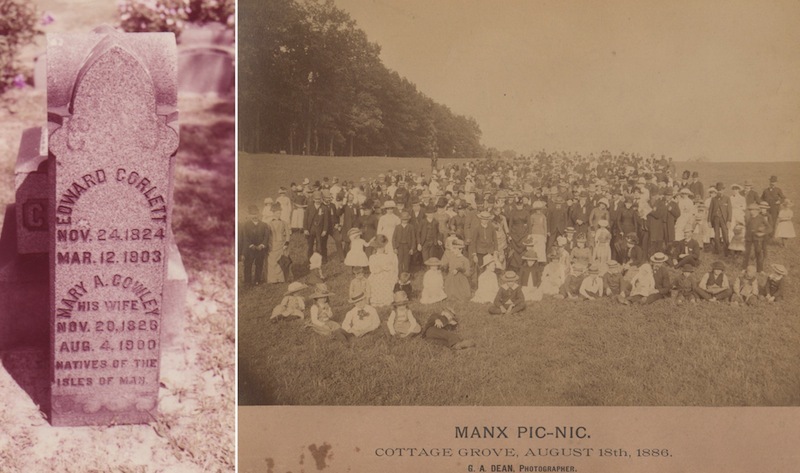Pioneers, Manxmen and Shakers at the Warrensville West Cemetery

Located within a small business district at 3451 Lee Road, Warrensville West Cemetery offers a reminder of the individuals and communities that inhabited the area prior to the development of Shaker Heights. The headstones and markers adorning the small graveyard speak of an unfamiliar landscape, lost to time, that was the home of brave pioneer families and their descendants, immigrant settlers, and the North Union Shakers. Listed as a landmark on August 24, 1976, these symbolic grounds are among the oldest designated landmarks in Shaker Heights, and provide a fitting place of remembrance for Warrensville Township's earliest residents.
The history of the cemetery can be traced back to the first settlers, and namesakes, of Warrensville Township. Daniel and Margaret Prentiss Warren emigrated to the Western Reserve from Acworth, New Hampshire in 1808 with their infant son. Working as a brick-maker, Daniel earned rights to a $300 parcel of land for his work in the construction of the Court House in Jefferson, Ohio. Choosing a lot based on its vicinity to Moses Cleveland's settlement, the Warrens built a log cabin in 1809 and cleared land for crops in the heavily wooded forest. The Warrens then began to raise a family in the rugged environment, and were soon joined by relatives in what was eventually named Warrensville Township.
In 1811, the couple's two year old daughter, Lovisa, died. She was buried on a ridge at the edge of their property. When this land was purchased by Asa Stiles in 1812, the grounds were transferred to the township for use as a cemetery. The burial ground would continue to be used by the Warren family, as well as other early settlers of Warrensville Township. Similar to community burial grounds formed in other inhospitable areas of Cuyahoga County, the cemetery was small, rustic, and unadorned. With roads and trails that proved to be unsuitable for travel much of the year, no nearby church, and living conditions that tended to promote their frequent usage, the centralized burial grounds soon became a repository of the township's pioneer settlers and their descendants.
As Warrensville attracted new residents, the cemetery began to reflect the changing face of the surrounding community. In 1826, three families that had recently emigrated from the Isle of Man arrived in Cleveland. Within a year, more than 200 Manx residents had settled in the Newburgh and Warrensville area. As word spread that Warrensville was a desirable location for farming, the township quickly became the center of the region's Manx population. Often characterized as deeply religious, hard-working and clannish, many of the pioneers of Warrensville's Manx settlement purchased lots in the austere graveyard. A demographic shift within the cemetery resulted from the combined influence of this growing immigrant population, changes in popular taste of burial grounds, and improved routes of transportation into and out of the township. By the early 1900s, vver half the graveyard's population were Manxmen.
The community burial grounds became host to a new group of Warrensville settlers at the turn of the 20th century. A 40-foot lot was purchased by the City of Shaker Heights to re-inter bodies from the North Union Shaker cemetery. Located on land that was to be developed as a residential neighborhood, the Van Sweringen Company received permission from the Shaker Society in Union Village, Ohio, to relocate the bodies of the 138 members of the communal society to Warrensville West Cemetery. The remains of eighty-nine Shakers were located, placed in coffins, and buried in a common grave. The site would not be marked until 1949, when the Shaker Historical Society placed a granite boulder from an old Shaker farm above the grave.
While the cemetery markers reflect the history of Warrensville's founders, Manxmen and Shakers, they also offers clues to the lives led by those interred. The many children and infants buried in the graveyard are a reminder of the harsh living conditions endured by Warrensville's earliest resident. Engravings on headstones identify the veterans of five wars. Of these veterans, four served in the American Revolution, two in the War of 1812, one in the Mexican-American War, fourteen in the Civil War, and one in World War II. Familial relationships, birthplaces, and occupations are also memorialized. Although most markers have been weathered to the point of ineligibility, the grave of Mary Brogden -who died in 1843 - even offers visitors to the burial grounds advice:
"Friends as you pass me by, As you are now, So once was I. As I am now, So all must be. Prepare for death, And follow me."
Images





